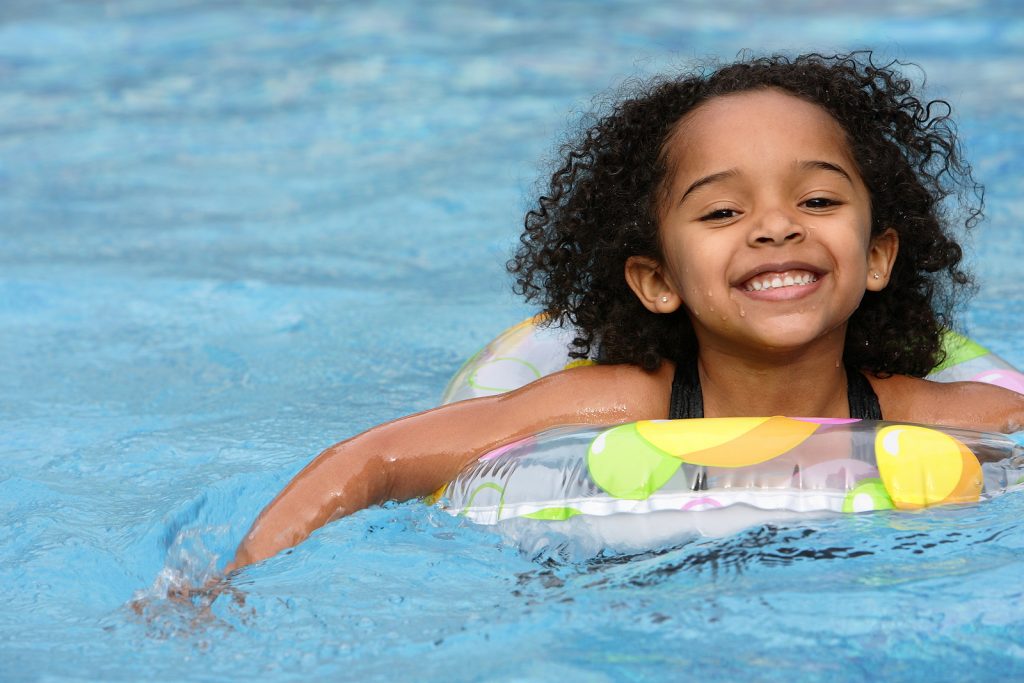
Planning a dip in the pool or the ocean but worried about swimmer’s ear? Contrary to the name, swimmer’s ear can occur on dry land too. It is an infection in the ear canal that runs from your eardrums to the outside of your head. This is different from the common ear infections that children get due to a cold. Those are mild infections as compared to swimmer’s ear, also known as otitis externa.
The reason it is associated with swimming is that the infection often occurs due to the water remaining in your ear after a swim, leading to a moist environment that aids bacterial growth. Putting your fingers in your ears, putting cotton swabs or other objects in the ear can also lead to swimmers ears due to damage to the thin layer of skin lining your ear canal. (Mayo Clinic, 2019)
Symptoms of Swimmer’s Ear
Swimmer’s ear is mild at first, but it can get worse if not treated. If it hurts when you tug at or press your ear, you might have swimmer’s ear. Other common symptoms are itchiness in the ear, slight redness, increasing pain, trouble hearing or muffled sounds, and some drainage of pus or fluid from the ear. Swimmer’s ear progresses from mild to moderate to advanced, which can be very painful and even lead to fever. (WebMD, 2019)
Causes of Swimmer’s Ear
Swimmer’s ear is mostly caused by bacteria. In some cases, it is also caused by a virus or fungus. The ear has a natural defense mechanism that helps keep it clean. Glands secrete a waxy substance called cerumen which forms a thin water-repellent layer on the skin of the ear. It also collects dirt, dead cells and other elements and helps push it out of the ear in the form of earwax. There is also some cartilage that partly covers the entrance of the canal, thus preventing foreign elements from entering the ear. (Mayo Clinic, 2019)

Prevention of Swimmer’s Ear
Keep Your Ears Dry: Dry out your ears properly after a swim or a bath. Use a soft cloth to clean only the outer part of the ear. Tilt your head to the side to drain out water or use a blow dryer at the lowest setting, one foot away from the ear. Do use earplugs or a bathing cap when you are going swimming. (WebMD, 2019)
Swim in Clean Water Bodies: Before you dive into a lake, pond or river, check for signs of bacteria levels and if it is safe to swim in such waters. When it comes to swimming pools and spas, find out whether they are cleaned regularly as dirty water can breed bacteria. (Mayo Clinic, 2019)
Avoid Putting Foreign Objects in Your Ears: Do not try to dig your ears with a hair clip, paper clip or cotton swabs or scratch your inner ears. Doing so can pack materials deep into the ear canal and irritate the inside skin of your ear or break the skin, causing infection. Also, keep your headphones and hearing aid clean to avoid infection. (WebMD, 2019)
Leave the Earwax Alone: Prying out earwax increases your chances of getting swimmer’s ear. Earwax plays a huge role in keeping your ears safe. Trying to take out earwax using other objects will probably push it deeper into the ear canal. To remove too much earwax, contact your doctor for a safe way to do the same. (Mayo Clinic, 2019)
Protect your Ears from Irritants: Chemicals in cosmetics can irritate the skin and cause swimmer’s ear. Use cotton balls as protection when applying hair dyes or using hairspray or other such products. (Mayo Clinic, 2019)
Be Cautious After an Ear Surgery: In the case of a surgery or ear infection, consult a doctor before swimming or doing anything that involves your ear coming in contact with water. (Mayo Clinic, 2019)
Swimmer’s ear is not a serious condition but if it is treated promptly but complications like temporary loss of hearing, long-term infection, damage to the cartilage and bone can occur. The infection can also spread to other parts of the body and this rare complication can be life-threatening. Follow precautionary measures, especially if you spend a lot of time in the water. If you recognize mild symptoms of swimmer’s ear, seek professional help immediately and get treated.
Works Cited
“Swimmer’s Ear.” Mayo Clinic, Mayo Foundation for Medical Education and Research, 28 June 2019, www.mayoclinic.org/diseases-conditions/swimmers-ear/symptoms-causes/syc-20351682.
“Swimmer’s Ear Prevention: Tips for Swimming, Showering, and More.” WebMD, WebMD, www.webmd.com/cold-and-flu/ear-infection/understanding-swimmer-ear-prevention.
